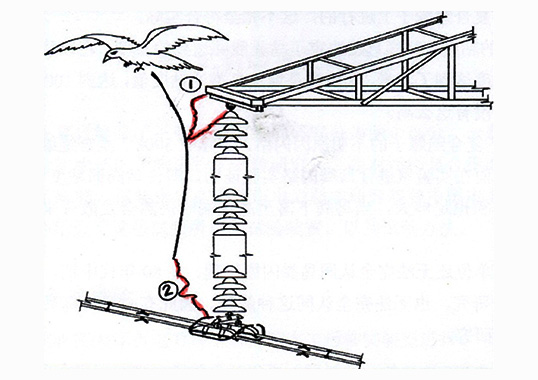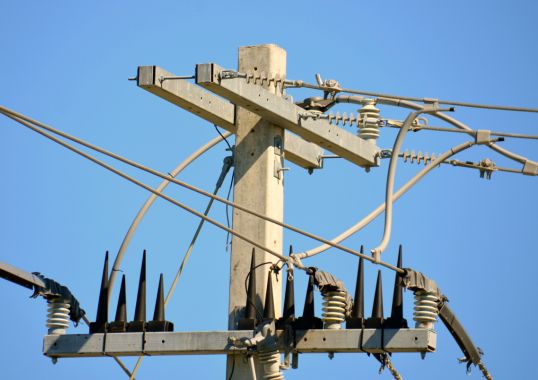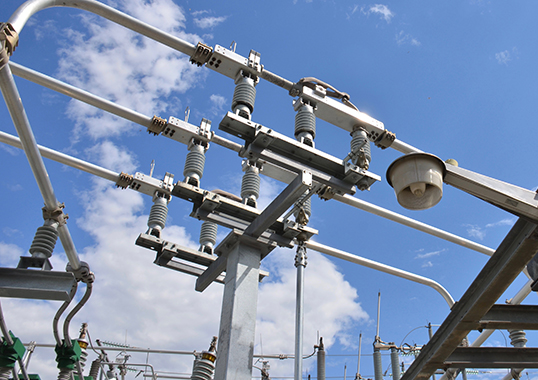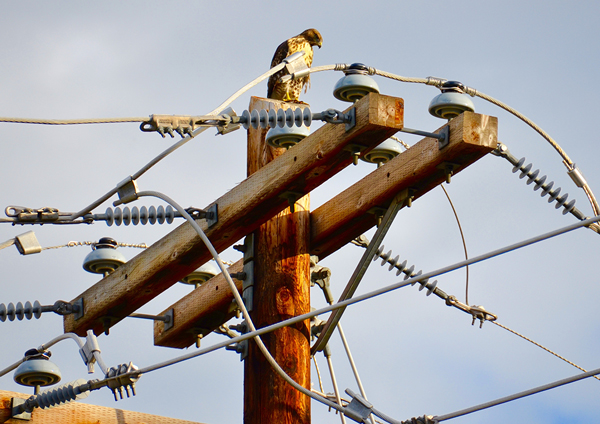Birds present a persistent threat to the safe operation of overhead transmission lines and indeed are a significant factor behind line tripping. In China, for example, hazards from birds rank 4th in terms of all causes of line trips – behind lightning, structural damage and icing. As such, they require constant scrutiny by power system engineers.
Line tripping triggered by bird excretions (also known as ‘streamers’) has two distinct categories. In one case, the excrement falls onto the insulator surface and becomes a source of highly conductive contamination once dissolved. Under wetting conditions, there is increased likelihood of pollution flashover. In the second case, the path along which excrement falls is so close to the insulator string that it can lead to breakdown of the air gap. As it falls, the excretion forms a continuous conductive path equivalent to placing a conductor in parallel to the insulator, significantly distorting electric field distribution of the air gap. The voltage at both ends of the insulator string must be withstood mainly by two air gaps, i.e. from the path of the bird excretion to the live end and also to the ground end. However, if the air in these two sections cannot withstand the line’s operating voltage, a discharge occurs through the path of the excrement. As such, even though it does not fall directly onto the insulator, it becomes even more problematic than if it did. This type of discharge phenomenon has been simulated at several high voltage laboratories in China. The excrement is artificially simulated using a mixture of table salt, kieselguhr, egg white and dextrin, among other ingredients. Similarly, the descent of the mixture is controlled utilizing air pressure such that it is possible to adjust the amount of excrement as well as its velocity and path relative to the location of the insulator. Using such techniques, discharges have been simulated on 110 kV, 220 kV, 330 kV and 500 kV strings.
Fig. 1, for example, shows the moment at which gap breakdown from simulated bird excrement occurred on a 220 kV string. The closer the path of the falling excrement to the edge of the insulator and the greater its quantity, the easier it is for such a discharge to occur. Moreover, in all cases where the distance between the path and the insulator is within a critical minimum, this type of discharge will occur. Subsequently, after the discharge, the bird excrement literally ‘explodes’ and flies apart at high speed in the form of powder such that nothing visible remains. Since power utilities judge whether such a flashover was triggered by bird excrement on the basis of traces left either on the insulator or on the ground below, this type of discharge is then often classified as a ‘flashover of unexplained cause’.
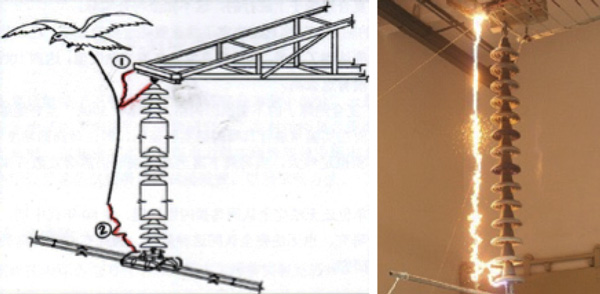
Researcher at Tsinghua University in Beijing conducted laboratory simulations to study the impact on discharge probability of the distance between falling bird excrement and the central axis of an insulator. Fig. 2 shows findings for a 220 kV suspension string. The region of highest risk of discharge relates path of descent to the relative location of the conductor such that if the falling excrement is within the oval area, a ‘streamer’ flashover will usually occur. The research also confirmed that if a protective cover is placed over the insulator in order to make the path of decent fall outside this critical area, flashovers due to falling bird excrement could be avoided – or at least decreased.
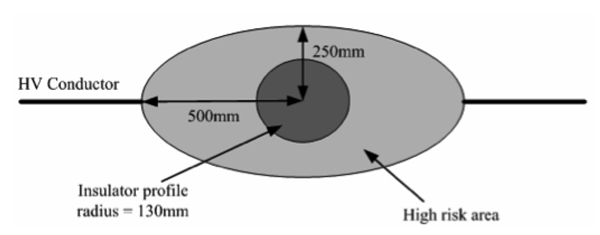
Another hazard from birds is pecking damage to the sheds of composite insulators. According to partial statistics, hundreds of such cases have been documented in China and these have occurred at all voltage levels (HV, EHV & UHV) – usually most often when lines are not yet energized or have been shut down for maintenance. Pecking damage can affect both the weathersheds and the silicone rubber housing covering the core. Since the latter risks exposing the rod to the environment, it becomes necessary to replace the damaged insulator to avoid risk of brittle fracture failure.
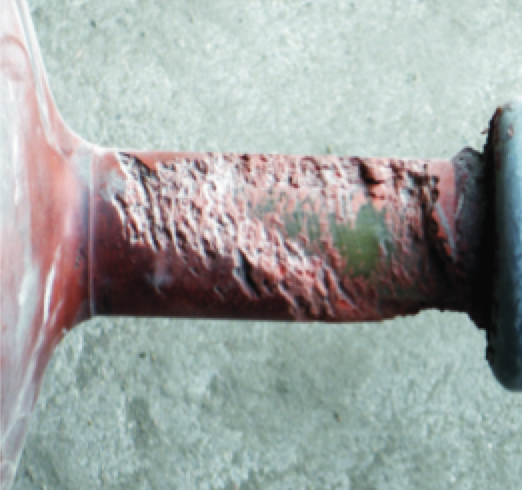
Protecting overhead transmission lines from the hazards posed by birds is a demanding task and at times even more complex than solving other types of technical challenges. On the one hand, society has the duty to protect birds, which many cultures also regard as spiritual. At the same time, birds are able to learn and adapt to whatever countermeasures (e.g. sound, lights, objects) are installed to keep them from nesting on towers. This requires engineers to continually search for even more innovative ways to ensure that power infrastructure and birds can co-exist in harmony.
[inline_ad_block]

